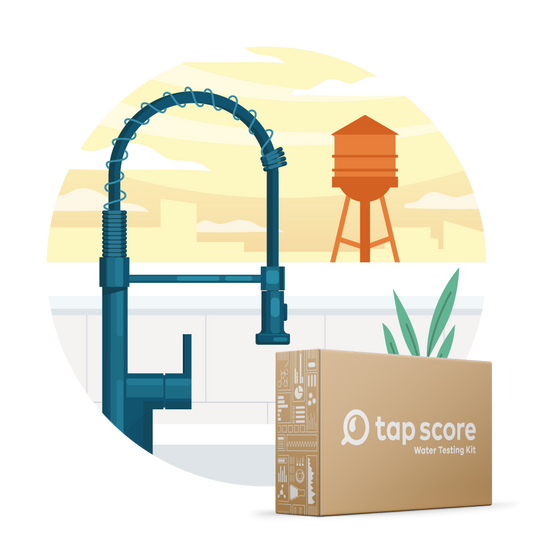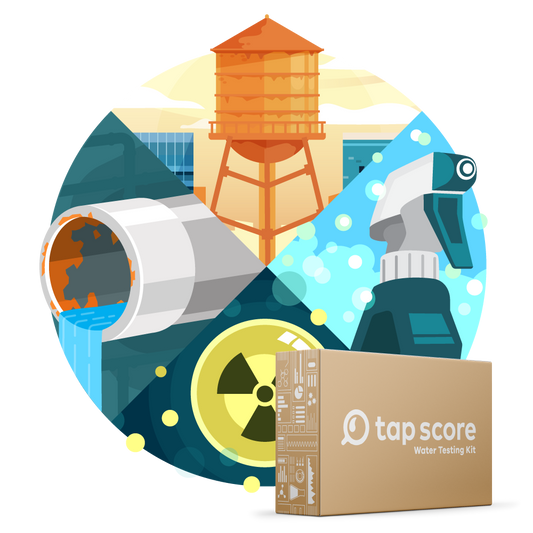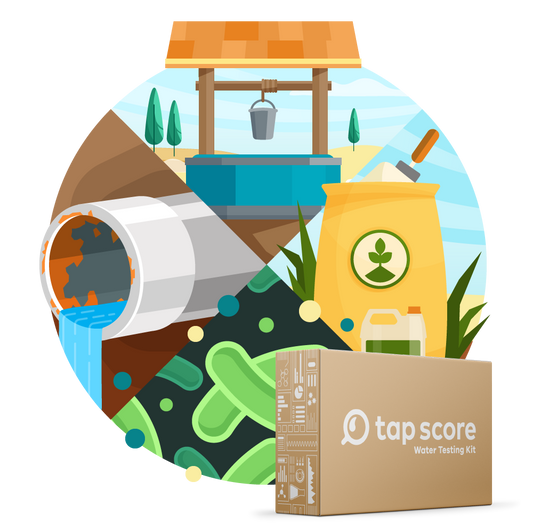Glyphosate and Tap Water: Are You At Risk?
Our blog is written by real experts— not AI. Each guide is carefully reviewed and updated based on the latest research. Plus, with no affiliate links, you can count on unbiased insights you can trust.
Glyphosate, more commonly known as “Roundup,” is an herbicide. The use of Roundup has come under extreme scrutiny—there are around 2400 lawsuits and counting alleging that glyphosate causes cancer. [1]
The following quick guide on glyphosate will explore exposure through drinking water and whether you should be worried.
Table of Contents:
- What Is Glyphosate?
- How Does Glyphosate Get into Drinking Water?
- What Are the Effects of Glyphosate on Humans?
- How to Test for Glyphosate in Water
- What's the Takeaway?
What Is Glyphosate?
Glyphosate is the first non-selective herbicide ever invented, meaning it can can kill any weed in its path, unlike previous herbicides that could kill only specific weeds. Put into production and first commercialized in 1974, Roundup subsequently became the most widely used agricultural chemical in history.[2]
Over 9.4 million tons of glyphosate have been sprayed onto fields worldwide since 1974.[3]
How Does Glyphosate Get in Drinking Water?
Glyphosate can enter surface and sub-surface water through two main pathways:
- Roundup windblown into bodies of water adjacent to sprayed fields
- Irrigation runoff from sprayed fields into bodies of water
Once glyphosate enters water, it becomes stable and does not degrade easily.
What Are the Effects of Glyphosate on Humans?
The International Agency for Research on Cancer (IARC) has classified glyphosate as a “probable carcinogen,” meaning there is evidence it can cause cancer under certain conditions.[4] On the other hand, the U.S. Environmental Protection Agency (EPA) reviewed available studies and concluded that glyphosate is not likely to be carcinogenic to humans based on typical exposure levels.[5]
These differing conclusions reflect two distinct approaches:
- The IARC evaluates whether a substance has the potential to cause cancer under any circumstance.
- The EPA assesses the likelihood of harm based on how much of the substance people are generally exposed to.
Additionally, the EPA relied largely on studies conducted by industry researchers, whereas IARC based its findings primarily on peer-reviewed academic research. As a result, the agencies drew conclusions based on different types of data and different scientific frameworks.
Of greatest concern, there is strong evidence that glyphosate is genotoxic, i.e., can cause damage directly to DNA, which can lead to cancer. There is also strong evidence that glyphosate induces oxidative stress—an imbalance in our body's capacity to regulate free radicals, which are associated with numerous damaging health outcomes and natural aging processes.
Despite the evidence from the IARC for the carcinogenicity of glyphosate, Monsanto still claims that Roundup is safe and will not cause cancer.[12]
How Are Humans Exposed to Glyphosate?
Humans are most likely exposed to glyphosate through direct inhalation and skin contact, crops treated with it, or drinking water contaminated with Roundup.[6]
Of the 2400 lawsuits underway, most people had direct contact with Roundup by using it to spray their homes, schools, and farms. However, one drinking water facility in Florida and two in Louisiana reported glyphosate levels above the Environmental Working Group’s health recommendation of 5 PPB (parts per billion) (9.00, 8.35, and 5.05 PPB respectively).
5 PPB is a much stricter health goal than the Federal EPA’s legally enforced Maximum Contaminant Level (MCL) of 700 PPB (or 0.7 mg/L).[7],[8]
The EWG did not flag Florida and Louisiana for water quality violations. Rather, these results were highlighted because their facilities reported concentrations above the World Health Organization and EPA’s definition of “acceptable risk” for carcinogens–a one-in-a-million chance of developing cancer.[8]
How Can You Protect Yourself Against Glyphosate?
The best ways to protect yourself and water against glyphosate are:
- Do not use glyphosate-based herbicides (especially if you have a private well)
- If you do use herbicides of any kind, avoid overuse to prevent run-off
- Try to limit consumption of crops likely sprayed with glyphosate
While the risk of glyphosate in your tap water is low if your water is treated by a municipality, private well owners near lawns, gardens, and farms that use herbicidesshould test their water for glyphosate.
How To Test for Glyphosate in Water
The only way to know if there is glyphosate in your water is to have your water tested in a certified laboratory. Tap Score offers a specialized drinking water analysis kit:
This glyphosate water test kit is the right choice if you want to detect in glyphosate in well water or public water sources:
If your water test detects glyphosate or its degradation byproducts in your water, you can explore treatment options. Every Tap Score water test includes unbiased and personalized treatment recommendations. In addition, our team of treatment experts, chemists, and water quality engineers can walk you through how to treat your drinking water to ensure your water supply is safe.
What's the Takeaway?
- Glyphosate is a non-selective herbicide that can enter water supplies via irrigation run-off or by being windblown.
- The International Agency for Research on Cancer (IARC) has classified glyphosate as a “probable carcinogen,” meaning there is evidence it can cause cancer under certain conditions.
- The only way to know if there is glyphosate in your water is to have your water tested in a certified laboratory. Tap Score offers a specialized glyphosate water test kit.
Sources and References
▾- Inside Monsanto's day in court: Scientists weigh in on glyphosate's cancer risks | The World from PRX
- Roundup® | Herbicides | Bayer Crop Science Canada
- Glyphosate Now the Most-Used Agricultural Chemical Ever
- IARC Monograph on Glyphosate
- Glyphosate | US EPA
- Public Health Goal for Glyphosate in Drinking Water, June 2007
- Glyphosate and AMPA in Drinking-water
- Glyphosate - EWG Tap Water Database
- National Primary Drinking Water Regulations | US EPA
- 10 Acceptable risk
- List of Classifications – IARC Monographs on the Identification of Carcinogenic Hazards to Humans
- IARC Publications Website - Some Organophosphate Insecticides and Herbicides
- US EPA reaffirms that glyphosate does not cause cancer | Reuters
- Carcinogenicity | The Detox Project











